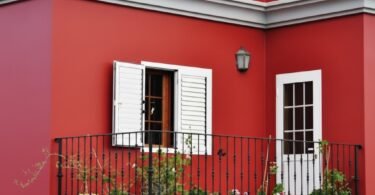The Great Window Debate That’s Splitting Homeowners
You know that feeling when you’re sitting by your living room window on a cold winter morning, coffee in hand, and you can practically feel your hard-earned money floating out through the glass? Yeah, I’ve been there too. That’s when most of us start thinking about window replacement, and boy, does that open up a can of worms.
Walk into any home improvement store or chat with neighbors over the fence, and you’ll quickly discover that people are pretty divided on this whole energy-efficient window thing. Some folks swear by them like they’re the holy grail of home improvement. Others roll their eyes and mutter something about marketing gimmicks and overpriced glass. I’ve heard both sides of this argument more times than I care to count, and honestly, I used to be just as confused as anyone else.
The thing is, we’re not just talking about a simple home upgrade here. We’re talking about a decision that can impact your wallet, your comfort, and your home’s value for decades to come. When I first started researching this topic, I felt like I was drowning in technical jargon and conflicting advice. Energy Star ratings, U-factors, low-emissivity coatings… it’s enough to make your head spin faster than a contractor’s estimate.
But here’s what I’ve learned after talking to countless homeowners, contractors, and yes, even a few skeptics who’ve changed their tune. The truth about energy-efficient windows sits somewhere between the zealous enthusiasm of salespeople and the dismissive shrugs of the skeptics. Some of these windows really do deliver on their promises, while others might leave you wondering if you’ve been sold a very expensive piece of marketing.
What we’re going to do together is cut through all the noise and get to the meat of what you actually need to know. I’m not here to sell you anything or push you toward any particular brand or type of window. What I want to do is arm you with the kind of real-world information that I wish someone had given me when I was staring at my own drafty windows, trying to figure out if dropping several thousand dollars would actually make a difference.
We’ll dig into the nitty-gritty of costs and savings, because let’s be honest, that’s probably what you’re most curious about. I’ll share what I’ve discovered about the relationship between price and performance, and why sometimes the most expensive option isn’t necessarily the best choice for your specific situation. We’ll also decode all that technical language that seems designed to confuse rather than clarify.
By the time we’re done here, you’ll have the knowledge you need to make a decision that makes sense for your home, your budget, and your lifestyle. No more wondering if you’re making the right choice or getting taken for a ride. Just solid, practical information from someone who’s been exactly where you are right now.
What Can You Expect to Get Back: The Real Numbers Behind Window Replacement
Let’s talk money, because that’s probably keeping you up at night. When I first started looking into window replacement, I made the mistake that most homeowners make. I walked into a showroom thinking I’d spend maybe a couple thousand dollars and walk out with a solution to all my drafty window problems. Boy, was I in for a surprise.
The window replacement market is wild, and I mean that in both good and bad ways. You’ve got options ranging from basic contractor-grade windows that won’t break the bank to custom-made architectural marvels that cost more than some people’s cars. The price spread is so wide it’ll make your head spin. I’ve seen perfectly functional windows for under a hundred bucks, and I’ve also seen price tags that made me wonder if they were plated in gold.
Here’s where things get interesting, though. Once a window earns that Energy Star certification, the price jumps significantly. We’re not talking about a small premium here. These certified windows command respect in the marketplace, and that respect comes with a price tag to match. The cheapest Energy Star certified window I’ve found starts around $120, and that’s before you factor in size, style, or any special features. Want something larger than standard? Add more money. Want a specific shape or custom configuration? Add even more money.
But here’s the kicker that caught me off guard. The window itself is only half the cost equation. Installation charges will often match or exceed the price of the window itself. I learned this the hard way when I got my first quote and nearly choked on my coffee. The installer explained that proper window installation requires skill, time, and often some unexpected problem-solving when they discover issues with your existing frame or wall structure.
Now, let’s get to the part you’re probably most curious about. What kind of savings can you realistically expect? I’ve dug through studies, talked to homeowners who’ve made the switch, and even tracked my own energy bills after my replacement project. The research shows you can potentially save up to 28% annually on your energy costs if you replace windows in at least half of your home. That number comes from comprehensive studies conducted by window companies and energy efficiency organizations.
But here’s what those studies don’t always tell you. That 28% figure assumes you’re replacing truly terrible windows with top-tier efficient ones. If your existing windows are already in decent shape, your savings might be more modest. I talked to one neighbor who replaced perfectly functional 10-year-old windows and saw maybe a 5% reduction in her energy bills. Another friend replaced windows from the 1960s and cut his heating costs by nearly 25%.
The age and condition of your existing windows makes a huge difference in your potential returns. If you’re dealing with single-pane windows, gaps you could stick your finger through, or frames that rattle in the wind, you’re likely to see dramatic improvements. If your current windows are already double-paned and in reasonable condition, the upgrade might be harder to justify purely on energy savings.
I’ve also learned that your local climate plays a bigger role than most people realize. Those savings percentages tend to be higher in areas with extreme temperatures, where your heating and cooling systems work overtime. If you live somewhere with mild weather year-round, the energy savings might not be as dramatic, but you’ll still likely notice improvements in comfort and noise reduction.
The payback period varies wildly based on your specific situation. Some homeowners see their investment pay for itself in energy savings within 8 to 10 years. Others might be looking at 15 to 20 years before they break even. The key is being realistic about your expectations and factoring in benefits beyond just energy savings, like increased home value and improved comfort.

Price vs. Energy Efficiency: Finding Your Sweet Spot
Here’s something that might surprise you. The most expensive windows aren’t always the most efficient, and the most efficient windows aren’t always the best choice for your home. I learned this lesson after spending weeks researching every specification and rating I could find, only to discover that the “perfect” window on paper might be overkill for my specific needs.
The relationship between price and efficiency is more complicated than most salespeople want you to believe. Yes, there’s generally a correlation between cost and performance, but it’s not a straight line. You’ll find windows in the middle price range that perform nearly as well as premium options that cost twice as much. The trick is figuring out where that sweet spot lies for your particular situation.
I remember standing in a showroom, overwhelmed by rows of similar-looking windows with dramatically different price tags. The salesperson kept pushing me toward the most expensive options, rattling off technical specifications that sounded impressive but didn’t help me understand what I actually needed. That’s when I realized I needed to step back and think about this differently.
Your climate should drive your decision more than any marketing material ever could. If you live in an area with brutal winters and scorching summers, investing in high-performance windows makes perfect sense. But if your weather is relatively mild, you might be paying for performance you’ll never need. I talked to a homeowner in San Diego who spent a fortune on windows designed for harsh climates, and while they’re beautiful, he admits he probably could have achieved similar comfort with less expensive options.
The Energy Star program has actually made this decision process much simpler, even though it might not seem that way at first glance. Instead of trying to decipher complex technical specifications and compare apples to oranges, you can walk into any reputable dealer and ask to see their Energy Star certified options within your price range. This certification takes the guesswork out of performance comparisons.
What I love about the Energy Star approach is that it’s climate-specific. The same window might qualify for certification in one region but not another, based on local climate conditions and energy needs. This means you’re not paying for performance characteristics that don’t matter in your area. A window designed for Minnesota winters might be overkill for Georgia, and vice versa.
But here’s where things get interesting from a value perspective. You don’t need to buy the highest-rated window in the Energy Star category to see significant improvements in your home’s comfort and efficiency. I’ve found that windows in the middle tier of Energy Star certified options often provide the best balance of performance and value for most homeowners.
The key is understanding what you’re actually buying. Some of those premium prices come from features that might not matter to you. Fancy hardware, designer glass patterns, or specialized coatings might add cost without adding meaningful efficiency improvements. I learned to separate the performance features from the aesthetic ones and make decisions based on what would actually impact my energy bills and comfort.
I also discovered that installation quality can make a bigger difference than the window itself. A mid-range Energy Star window installed perfectly will outperform a premium window installed poorly every single time. This is why I always recommend factoring installation reputation into your decision process, not just the window specifications.
The bottom line is this. You can find excellent energy-efficient windows across a wide price spectrum. The trick is matching your needs to the right performance level without getting distracted by features you don’t need or sales pressure to buy more than makes sense for your situation.
The Language of Windows: Decoding Technical Terms That Actually Matter
Let’s be honest about something. The window industry loves its jargon, and sometimes it feels like they’re speaking a different language just to keep the rest of us confused. I spent hours reading manufacturer websites and product brochures, feeling like I needed a translator just to understand what I was looking at. But once you crack the code, it’s actually not that complicated.
Glazing is probably the simplest term you’ll encounter, and it’s just a fancy way of saying glass. When you see numbers like double-glazed or triple-glazed, they’re telling you how many layers of glass are in the window. Single-glazed means one pane of glass, double-glazed means two panes, and so on. More layers generally mean better insulation, but they also mean more weight, more cost, and potentially more things that can go wrong over time.
I used to think that more glass layers automatically meant better performance, but it’s not quite that simple. Double-glazed windows offer a significant improvement over single-pane, but the jump from double to triple isn’t always as dramatic as you might expect. Triple-pane windows do provide better insulation, but they’re also heavier, more expensive, and might not be necessary depending on your climate and existing home insulation.
Low-E coatings are where things start to get more interesting, and frankly, more confusing. Low-E stands for low emissivity, which is a fancy way of describing a window’s ability to reflect heat rather than absorb it. Think of it like sunglasses for your windows. These microscopic metallic coatings are applied to the glass to control heat transfer, and they can be tuned for different climates and needs.
Here’s what confused me at first. There are different types of Low-E coatings designed for different situations. Some are designed to keep heat in during winter, while others are designed to keep heat out during summer. The best choice depends on your local climate and which season creates the bigger energy challenge for your home. In colder climates, you want coatings that let solar heat in but keep your heated air from escaping. In hot climates, you want coatings that block solar heat while still allowing natural light through.
Gas fills might sound like something out of a science fiction movie, but they’re actually pretty straightforward. The space between glass panes in modern windows is filled with inert gases instead of regular air. The two most common options are argon and krypton, and yes, these are the same noble gases you might remember from chemistry class.
Argon is the more common and less expensive option. It’s denser than air, which makes it better at preventing heat transfer between the glass panes. Krypton performs even better than argon but costs significantly more, so you’ll typically only find it in high-end windows or in very thin spaces where argon wouldn’t fit properly. The difference in performance between argon and krypton isn’t huge for most applications, so don’t stress too much about this choice unless you’re dealing with extreme climate conditions.
Frame materials probably have the biggest impact on both performance and your daily experience with the windows. Wood frames look beautiful and provide excellent insulation, but they require regular maintenance and can be vulnerable to moisture problems. Vinyl frames are low-maintenance and affordable, but they can look less refined and may not hold up as well in extreme temperatures.
Fiberglass frames offer a nice middle ground with good insulation properties, durability, and relatively low maintenance requirements. Aluminum frames are strong and sleek but conduct heat and cold readily, which can work against your energy efficiency goals. Many modern windows use combinations of these materials, trying to capture the benefits of each while minimizing the drawbacks.
The truth is, there’s no universally best frame material. Your choice should depend on your local weather conditions, maintenance preferences, aesthetic goals, and budget. I’ve seen beautiful, high-performing windows in every frame material category. The key is understanding the trade-offs and choosing based on what matters most to you and your specific situation.
Making Your Decision: Bringing It All Together
Now that we’ve covered all the technical stuff and financial considerations, let’s talk about how to actually make this decision without losing your mind. I know it can feel overwhelming when you’re trying to balance performance, cost, aesthetics, and long-term value all at the same time. The good news is that you don’t have to become a window expert to make a smart choice.
Start with your climate and your current windows. These two factors will tell you more about what you need than any sales brochure ever could. If you’re dealing with single-pane windows in a climate with cold winters or hot summers, almost any modern energy-efficient window will provide noticeable improvements. If your current windows are already reasonably efficient, you’ll want to be more selective about when and how you upgrade.
I recommend getting quotes from multiple contractors, but don’t just focus on the bottom line price. Pay attention to the specific products they’re recommending and why. A contractor who takes time to assess your home’s specific needs and explains their recommendations is worth more than one who just gives you a standard pitch. Ask about installation warranties, product warranties, and what happens if problems arise down the road.
Consider your timeline and budget realistically. Window replacement is often a bigger project than homeowners initially expect, especially if there are any structural issues or if you’re changing window sizes. You might be better off replacing windows in phases rather than trying to do everything at once. This approach also lets you see how the first batch performs before committing to the rest of your home.
Don’t forget about permits and local building codes. Some areas have specific requirements for window replacement, especially if you’re changing sizes or configurations. A reputable contractor should handle this for you, but it’s worth understanding what’s required in your area before you start the project.
Think about the long-term picture too. Energy-efficient windows should last 20 to 30 years or more with proper care. Consider how your needs might change over that time period. Are you planning to stay in your current home for the long haul, or might you be selling in a few years? The answer should influence how much you invest in premium features versus basic efficiency improvements.
The truth is, there’s no perfect window for every situation, and there’s no universal right answer to whether energy-efficient windows are worth the investment. What matters is finding the option that makes sense for your specific home, climate, budget, and goals. Armed with the information we’ve covered, you’re ready to have informed conversations with contractors and make a decision you’ll be happy with for years to come.
Remember, the best window replacement project is the one that solves your specific problems within your budget, not the one that looks best on paper or costs the most money. Trust your research, trust your instincts, and don’t let anyone pressure you into spending more than you’re comfortable with. Your home, your rules.







Leave a Comment